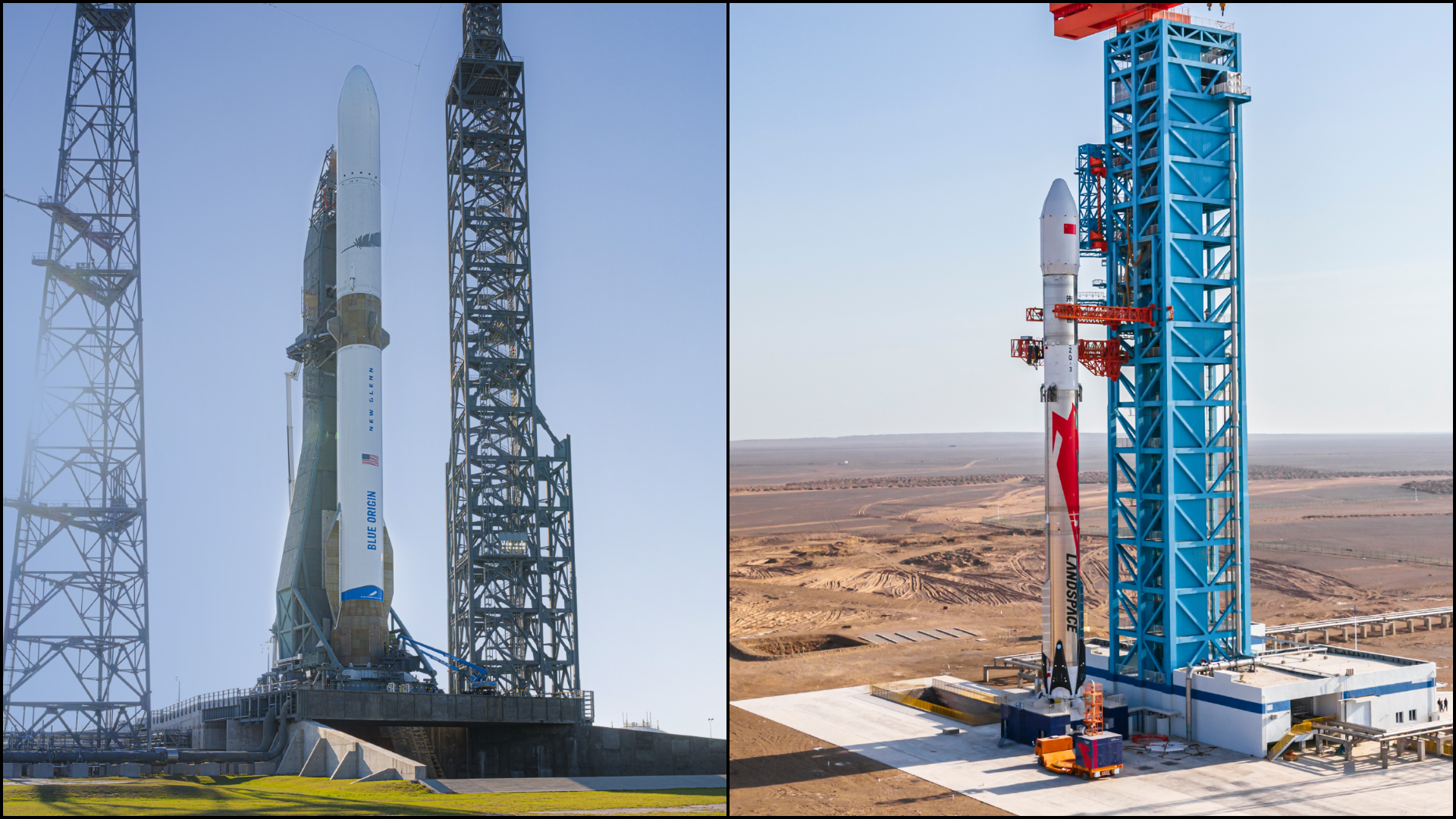Table of Contents
The Chinese space program has had a growing issue regarding launch capacity and especially with capable modern launchers, but that has been rapidly changing with this recent year. 2025 has proven to be a very pivotal year for many key construction projects.
Haiyang Spaceport
Arguably, the most interesting part of China's coastal launch site expansion has been the growth of the Haiyang spaceport. The Haiyang spaceport has helped facilitate many tests, such as the Long March 12 reusable rocket demonstrator, and soon the Tianlong-3 static fire. It has also had many launches from small ships just off its coast.
For instance, Yu Zhaojun, head of the Ship Management Department at Haishangfa and other officials at Haiyang announced the creation of a ship meant for the launch and recovery of medium lift launch vehicles in August of this year.
They have also recently released very ambitious development plans for Haiyang to reach 100 annual launches by 2030. The plans involve 8 pads: 4 normal ground pads and 4 at sea, along with a dedicated static fire area.

These plans are also not only theoretical, as they have already broken ground on this project, and the plans are definitely grand. Many of these pads are meant to support some very powerful launch vehicles and have gotten increased investments from multiple private and state-owned companies.
Haiyang has unexpectedly started positioning themselves as a major launch center for the future of China's launch industry. It also has a strong starting off point with already facilitating many small lift launch vehicles.
The Haiyang facilities support in rocket assembly and testing, with plans to produce up to 20 solid rockets annually, along with increasing launch capabilities, making it a very appealing choice for many launch providers in China

Why sea launch?
China has experienced a huge boost in demand with the launch of many mega-constellation projects and the effort to create a modern satellite network comparable to others globally. However, China’s launch industry has recently been dominated by hypergolic vehicles launching from inland sites that lack ground support equipment (GSE) to support cryogenic rockets at the same capacity as hypergolic ones.
This led to the creation of the Wenchang Space Launch Site, a modern coastal launch site primarily built for cryogenic vehicles. This launch bottleneck happened to coincide with a booming small launch industry in China, incentivizing new private launch providers and encouraging the undertaking of more international launch missions. China aims to position itself as an international launcher rather than just serving domestic payloads, and growing launch capacity supports this goal.
This situation led companies and institutions to seek novel solutions, one of which was sea launch. This was a highly attractive option as it lifts many restrictions associated with launching from Jiuquan or even Wenchang. As investment in this area expanded, its feasibility increased, facilitating the unexpected rise.
Hainan Commercial Site
The unexpected rise of Haiyang does not mean that Wenchang has slowed down; on the contrary, construction there has been very intense, highlighted by the recent inauguration and growth of a commercial launch site.
In 2024, China unveiled the Hainan Commercial Spacecraft Launch Site, a $1.5 billion expansion adjacent to Wenchang. Designed to accommodate private aerospace firms, the complex features two dedicated pads, one exclusively for Long March 8 and the other for over 12 different launch vehicles. There is also a shared technical center for payload integration. State-owned enterprises like the China Aerospace Science and Technology Corporation have partnered with startups to streamline licensing and operations.
The site had its first launch at the end of 2024 but has recently seen some intense expansion with the announcement of Pads 3 and 4 in January of 2025.

The foundations for pads 3 and 4 began construction this year and are expected to be completed in the latter half of 2026. Pads 1 and 2 continue to mature with increasing launch activity. At the Wenchang Space Launch Site, general growth in support facilities is underway. Meanwhile, for the Long March 10 rocket, two vehicle assembly buildings are being finalized, and a launch pad is scheduled for completion this year. Many companies are also building their own support facilities for purposes ranging from satellite production to rocket refurbishment.
To conclude, the year 2025 has marked a pivotal turning point for China’s space launch capabilities and infrastructure. The rapid expansion of sites like Haiyang and Wenchang, along with the emergence of the Hainan Commercial Spacecraft Launch Site, reflects China's commitment to addressing launch capacity bottlenecks. Haiyang's ambitious growth, including its future goal of 100 annual launches and integration of sea launch platforms, positions it as a crucial hub for both private and state-backed launch providers. Simultaneously, Wenchang and Hainan continue to evolve with new pads, assembly buildings, and international launch ambitions. Together, these developments underscore China’s strategic drive to become a global leader in space access, supporting an unprecedented surge in satellite deployments and commercial launch activity for the coming decade.






